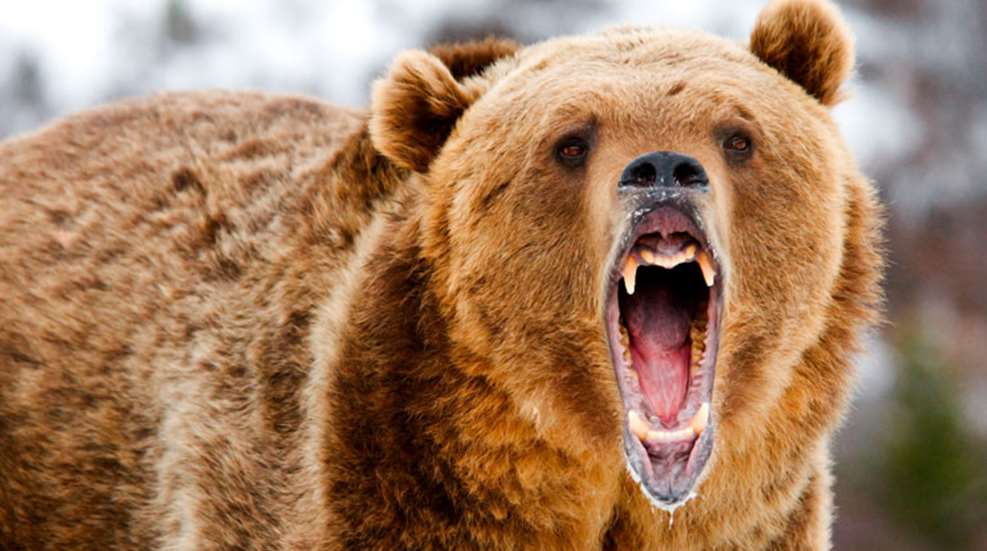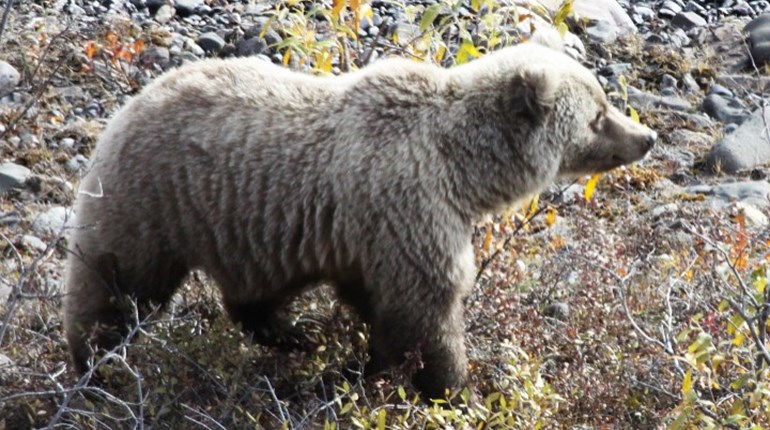
It was 2 a.m. when the black waters of Lake Okeechobee erupted in a foamy geyser as a 10-foot alligator inhaled the rotten chicken used as bait. The engine on the airboat fired to life and the small craft surged forward toward the thrashing reptile. The plan was to get the boat directly over the gator and snatch him with a hand-thrown grappling hook. Florida’s regulations for gator harvest require some unorthodox methods when it comes to bringing the animals in for their meat and hides—you can’t just shoot for the head the way that African crocodiles are hunted.
As the boat’s pilot made increasingly smaller circles, the top-heavy craft listed harder and harder to port. Just as my friend Ryan yelled for the driver to cut off his turn, the airboat capsized, dumping all four occupants into the water. Ryan was dragged downward by the nylon cord attached to the gator bait that was still trapped in prehistoric jaws—the other end wrapped around his ankle as the alligator dove for the muddy bottom. He struggled in the darkness and finally managed to free himself from the tangled line and swam for the surface. As the four hunters gathered at the overturned boat, their single headlamp was overcome by water and shorted-out in a blink. Half of their life vests were lost and they had no means of communication. They were left with two choices: try to swim fully-clothed to the lake’s bank nearly a mile away or hang onto the side of the boat like larger versions of that putrid chicken while the mosquitoes ate them for dessert. Despite the scores of yellow eyes that had reflected back the beam of their spotlight earlier that evening, they chose to swim for it in the pitch-black darkness. Every blade of grass that touched their faces in the night sent shivers down their spines as they struggled toward the Lake’s western dike. All four hunters made it safely to shore, but it clearly could have ended badly. Gator attacks on humans are rare, but thrashing around in their habitat at night is tempting fate.
I've been in the thick stuff with elephant cows and calves on three sides. I've killed a Cape buffalo at close range. I've followed-up a leopard that we thought my friend had wounded in chest-high grass and I put a tranquilizer dart into the rump of a ticked-off lion at 10 yards. Each of these situations had the potential for danger, but I never felt a fraction of the fear that my friends felt that night in South Florida. The term “dangerous game” is something that we hunters often associate with Africa, but there’s plenty of dangerous game hunting to be had right here at home. Most hunters that are killed, wounded or threatened by dangerous game in North America are after other species at the time, but that doesn’t mean that hunting bears, mountain lions, gators or even big feral hogs isn’t a risky activity.
If we’re talking about dangerous game on this continent, we have to start with the big bears. Since the 1940s, bears have killed 11 hunters in North America. Not surprisingly, grizzlies were the main culprits—but in 1943 a hunter in Vermont was killed by a black bear that he’d wounded. If we look back into the 19th century, when the west was truly wild and grizzly hunting was more common, we can glimpse the real dangers of hunting the big bruins. In June of 1886, a legendary bear hunter known only as “Old Ike” ventured into the Salmon River area of Idaho in search of a grizzly. He wounded a bear and followed it into the thick forest where it was lying in wait. The bear attacked Ike and clamped its powerful jaws onto his chest, crushing his thoracic cavity. He died within minutes as his friends looked-on. Seven other grizzly hunters from Arizona to Wyoming met the same fate during the mid- to late-1800s. More recently, a hunter from Rhode Island was severely mauled in Alaska after wounding a bear and following it into a thicket. He suffered ghastly wounds to his head and leg.
Fewer hunters have been killed or wounded in recent decades while actually hunting grizzlies, but being shoulder-deep in elk blood while field dressing game in bear country is a sure way to find trouble if one isn’t careful—you don’t have to be hunting dangerous game for it to be dangerous. As grizzly populations increase across much of the West, we are likely to see hunter-bear encounters rise.
Bears aren’t the only game animals in North America that should be considered dangerous; mountain lions can be just as deadly. A 1991 study by wildlife ecology professor Paul Beier is a bit dated, but it catalogued all known mountain lion attacks from 1890 to 1990. During this time period, there were 10 people killed and 48 wounded by mountain lions. Though the study does not delineate hunters from non-hunters, a look at the fatalities suggests that few if any of the victims were in-pursuit of the lions when they attacked—most of those killed were children. The study also finds that cougar attacks were on the rise during the two decades leading up to its release, suggesting that the increase in cougar numbers has subsequently increased the risk of attack—anecdotal evidence suggests that attacks have continued to rise over the past 24 years.
Grizzlies and mountain lions are clearly to be taken seriously, but what about those of us who don’t live in bear or cat country? The most prolific game animal in much of the U.S. that can be considered dangerous is the feral hog. Whether you call them pigs, hogs or wild boar and whether you treat them as a noble game animal or a destructive pest—they are capable of hurting you. No statistics on hog attacks are available, but a document from Texas A&M’s Agrilife program suggests that, unlike with bears and cougars, hunters are at the greatest risk of facing an attack.
“Where the rare wild pig attack occurs, it is usually during a hunting scenario where dogs are used to bay or corner a pig in a spot and the pig ‘runs through’ the associated hunters standing nearby. Occasionally, humans inadvertently walk between a sow and her litter and the sow reacts to protect her young,” the report reads.
When hog hunting with dogs, the greatest risk is to the hounds—so much so that serious dog hunters equip their canines with Kevlar body armor to protect them from a boar’s razor-sharp cutters. Feral hogs can and do attack hunters though, and the sheer number of both hogs and hog hunters make this one of the likely dangerous game scenarios on this continent.
Though a hunter’s greatest risk of death or injury remains falling from a treestand, hunting bears, mountain lions or feral hogs presents a danger not unlike those faced on the other side of the Atlantic. Lots of practice, careful shooting, premium bullets and a healthy dose of common sense are the best medicine for dangerous game anywhere on the planet. Even if the risk of injury or death is rare, I’d hate to be the one guy in a decade killed by one of these creatures. Just because you’re not boarding a plane for the long flight to Africa doesn’t mean you can’t experience the thrill and risk associated with dangerous game hunting—be careful.





































